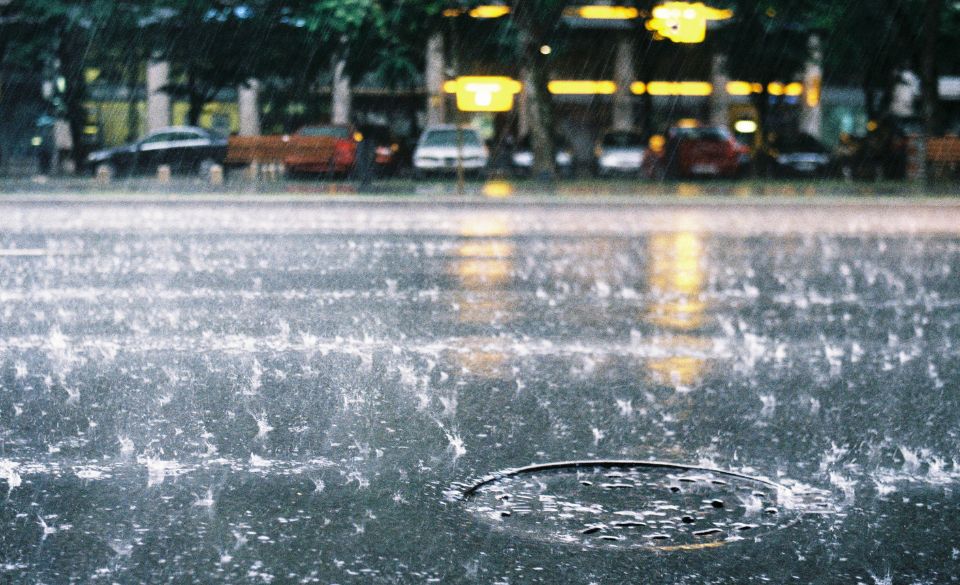
Running in Wet Weather: Comprehensive Guide & 10 Tips
Page Contents
Running in the rain can offer a refreshing experience, but it can also bring its share of challenges. These guidelines are designed to assist you in preparing for wet-weather runs and understanding the safety considerations when hitting the pavement in the rain. Whether you’re a novice gearing up for your first 5K or an experienced marathon enthusiast, these tactics are invaluable for ensuring a safe and enjoyable rainy run. Drawing upon my expertise as a running coach and a long-time runner, I’ve assembled a collection of my top recommendations for running in the rain, aimed at helping you maximize your runs even when the weather isn’t on your side.
Is Running in the Rain Safe?
A common question that often crosses the minds of runners is whether running in the rain is a safe endeavor. In most cases, the answer is a resounding yes! Running in the rain can be perfectly safe, especially when it’s a light drizzle. However, there are important safety considerations to keep in mind. If thunder and lightning are present, or if the rain is accompanied by heavy downpours, it’s advisable to forgo your outdoor run and opt for an indoor workout or the trusty treadmill. Additionally, preparing adequately and wearing the right gear is crucial to ensure you remain as dry and comfortable as possible during those rainy-day runs.
Here are some key ways to prepare for running in the rain:
Invest in waterproof running shoes: While it might seem like an extra expense, waterproof running shoes can be a game changer. Typically crafted with materials like Gore-Tex, many leading shoe brands offer waterproof running shoe options. Consider models like the Adidas Terrex GTX Trail Running Shoes, which I personally find worth the investment for outdoor running enthusiasts. These shoes are often designed with extra traction to enhance your stability when running on slippery surfaces.
Don a waterproof running jacket for chilly, rainy runs: Rain can quickly lower your core body temperature, which can be refreshing on hot and humid days but less desirable in cooler weather. A waterproof running jacket is your ideal companion for staying dry and warm when the rain decides to join your run. It’s worth noting that while a jacket is helpful for cooler conditions, you should be cautious of extreme cold and rain. In the case of freezing rain and frigid temperatures, it’s best to transition your workout indoors, as the combination of cold and rain increases the risk of hypothermia.
Wear a hat for added protection: Sporting a hat during rainy runs can be a real game-changer, especially if you wear contact lenses. Not only does it shield your face from the rain, but it can also help prevent your lenses from fogging up or getting wet. This small addition can greatly enhance your comfort during rainy workouts.
Advantages of Running in the Rain
Running in the rain presents several benefits, such as:
Preparing for adverse racing conditions: Training in the rain equips you to handle road races in challenging weather and rainy conditions, building your resilience and adaptability.
Cooling off on hot days: A gentle rain can provide much-needed relief on scorching running days, making your outdoor workouts more bearable.
Cultivating mental toughness: Running in the rain enhances your confidence and mental fortitude. Each rainy run introduces unique challenges that, when conquered, boost your resilience and readiness to tackle more significant obstacles.
Staying on track with your training: Regardless of your target distance, be it a 5K, half marathon, or marathon, adhering to your training plan can be a daunting task when the weather turns wet. However, running in the rain allows you to maintain your consistency and endurance, helping you prepare for your race day goals.
10 Rainy Day Running Tips
Prepare for wet weather runs with these strategies to ensure a safe and enjoyable experience:
1. Choose Quality Running Shoes:
Opt for waterproof running shoes, ideally with Gore-Tex technology, to keep your feet dry in the rain. Ensure your shoes have sufficient grip for traction, especially on slippery surfaces. Trail running shoes often provide excellent traction for rainy conditions.
2. Wear Moisture-Wicking Socks:
Select lightweight, moisture-wicking socks to keep your feet comfortable and prevent soggy, heavy cotton socks that can cause discomfort.
3. Dress in Layers:
Layer your clothing for rainy runs, and don’t overdo it. Wearing moisture-wicking materials is essential to avoid overheating and chafing. Include a waterproof outer layer for cooler, wet weather.
4. Waterproof Running Jacket:
In cooler conditions, a waterproof running jacket can keep you warm and dry during your run. On hot and rainy days, it can shield you from the rain without causing overheating.
5. Stay Visible with Reflective Gear:
Due to reduced visibility in rainy conditions, wear reflective gear such as shirts or pants to ensure your safety, especially in rainy and foggy weather.
6. Mind Your Footing:
Be cautious of slippery surfaces. Avoid flooded areas, plan your routes on higher ground when possible, and watch your footing to prevent slips and falls.
7. Protect Your Eyes and Face:
A hat with a brim, such as a baseball or trucker hat, helps shield your face and eyes from the rain, ensuring better visibility during your run.
8. Keep Your Essentials Dry:
If you lack pockets for your phone, ID, or keys, use a running backpack or a plastic bag to protect your belongings from the rain. A simple Ziploc bag can safeguard your phone.
9. Shorten Your Stride:
Take shorter steps, especially during heavy rain, to maintain balance and stability on wet surfaces.
10. Adjust Your Route:
In rainy conditions, adapt your running route as needed, potentially reducing your mileage or avoiding muddy or flooded areas. On cold, rainy days, your body may use more energy to stay warm, so consider shortening your route to maintain comfort and safety.
Frequently Asked Questions (FAQs)
1. Why is running in the rain a good idea?
Running in the rain offers a refreshing and cooling workout, making it an ideal choice for warm weather.
2. What should be avoided when running in the rain?
It’s best to avoid wearing all-cotton clothing and overdressing, as these can lead to discomfort and chafing when wet. Instead, opt for lightweight layers and a brimmed hat to protect your face.
3. What should you wear for rainy runs?
Outfit yourself with running shoes designed for wet conditions, featuring excellent traction for slippery surfaces. Don a hat with a brim to keep your face dry and comfortable. In cold weather, a waterproof running jacket is advisable. Choose moisture-wicking layers to stay as comfortable as possible during rainy runs. Lastly, secure your phone in a pocket or plastic bag to protect it from moisture.
4. Can running in the rain improve my mental toughness?
Yes, running in the rain can help boost your mental toughness. Each rainy run comes with unique challenges, which can enhance your confidence and resilience for future runs.
5. How can running in the rain help me stay on track with my training program?
Running in the rain allows you to adhere to your training schedule, even in less-than-ideal weather conditions. Whether you’re preparing for a 5K, half marathon, or marathon, braving the rain helps build endurance and prepares you for race day.
6. What safety precautions should I take when running in the rain?
When running in the rain, always be cautious of slippery surfaces and flooded areas. Choose your route carefully and consider shortening your stride in heavier rain to maintain better balance.
7. Is reflective gear necessary for running in the rain?
Yes, wearing reflective gear is essential in rainy and foggy conditions to enhance your visibility and safety, as it can be harder for drivers to see in the rain.
8. Are waterproof running shoes worth the investment?
Investing in waterproof running shoes can be beneficial for rainy runs. They keep your feet dry and offer excellent traction, which can be especially useful on slippery surfaces.
9. How can I keep my essentials like a phone or keys dry during a rainy run?
To protect your phone, keys, and other essentials during a rainy run, use a running backpack or a plastic bag to keep them dry. A Ziploc bag is a simple yet effective solution for safeguarding your phone from moisture.
10. What’s the recommended stride length for running in the rain?
In heavier rain, consider taking shorter steps to help maintain your balance on wet surfaces and reduce the risk of slipping.
11. How can I adapt my running route for rainy weather?
If it’s raining and you’re concerned about the conditions, you may want to shorten your route or choose paths that are less likely to be muddy or flooded.
Final Words – Running in Wet Weather
Running in the rain can be both invigorating and challenging. While it offers a refreshing way to work out, it also comes with its set of considerations and strategies to ensure your safety and comfort during those rainy runs. These tips and insights are designed to assist runners of all levels, from beginners gearing up for their first 5K to seasoned marathon enthusiasts, in maximizing the benefits of running in the rain, even when the weather is less than ideal.
Safety is a top priority, and in most cases, running in the rain is safe, especially during lighter rain showers. However, when thunder, lightning, or heavy downpours are in the mix, it’s best to opt for an indoor workout or a treadmill run. Additionally, equipping yourself with the right gear and following certain precautions is essential for a successful rainy run.
Investing in waterproof running shoes, like those featuring Gore-Tex technology, is a game changer. These shoes keep your feet dry and provide the traction needed for slippery conditions. Wearing moisture-wicking socks is key for comfort, avoiding the pitfalls of soggy, cotton socks. Dressing in moisture-wicking layers and a waterproof running jacket, when necessary, ensures you remain warm and dry on your run.
Staying visible is crucial in rainy conditions, so consider adding reflective gear to your attire. Pay attention to your footing, avoiding flooded areas and slippery surfaces. A hat with a brim helps protect your face and keep your vision clear during the run. For storing essentials like your phone or keys, a running backpack or a simple Ziploc bag is your safeguard against moisture. Adapting your stride and route, and knowing how running in the rain can boost mental toughness and prepare you for races are all part of the rainy day running experience.
As you venture into the world of running in the rain, stay mindful of these FAQs. Running in the rain can be an excellent choice, offering a unique and refreshing workout opportunity. However, certain precautions, such as avoiding all-cotton clothing and overdressing, are important for a positive experience. The right gear, like waterproof running shoes, is crucial to ensure you stay comfortable and dry. Reflective gear can boost your safety, especially in rainy and foggy conditions. Furthermore, building mental toughness and adapting your running routes as needed are essential components of the rainy day running experience. Whether you’re preparing for a specific race or just enjoying the rhythm of the rain, running in wet conditions can be an enriching and empowering experience.



